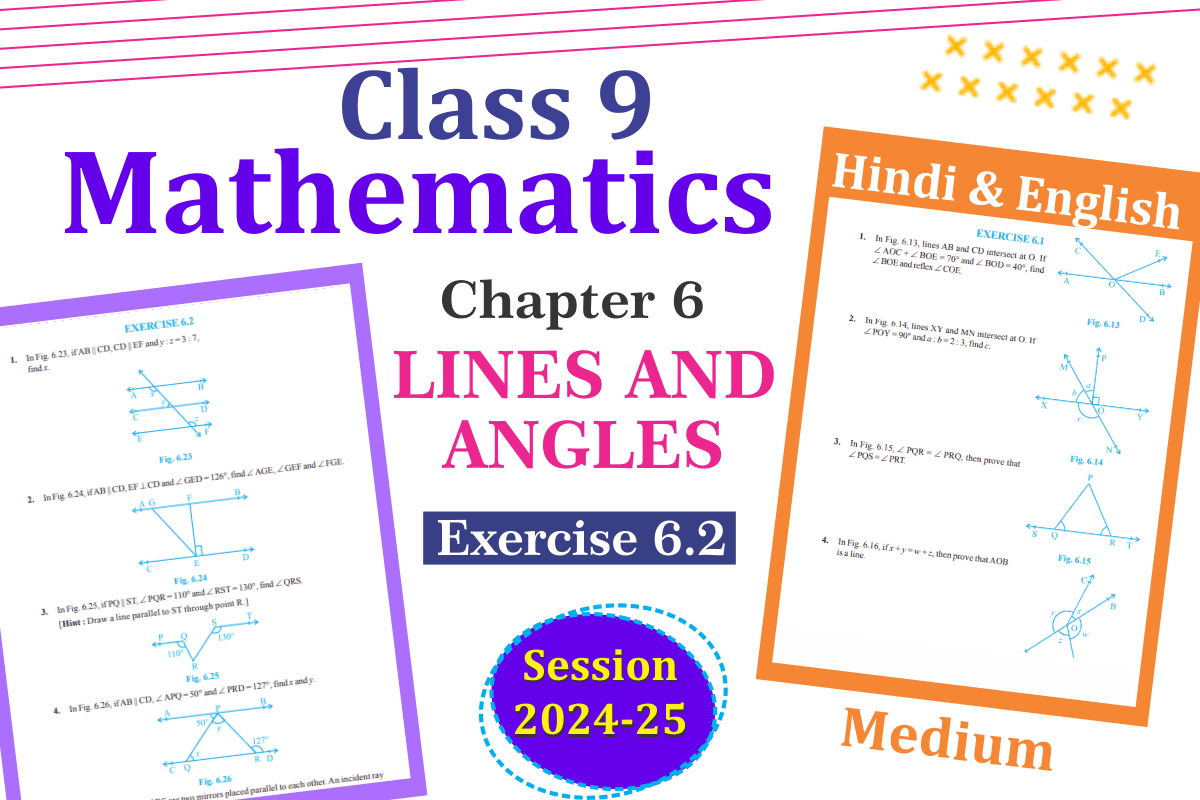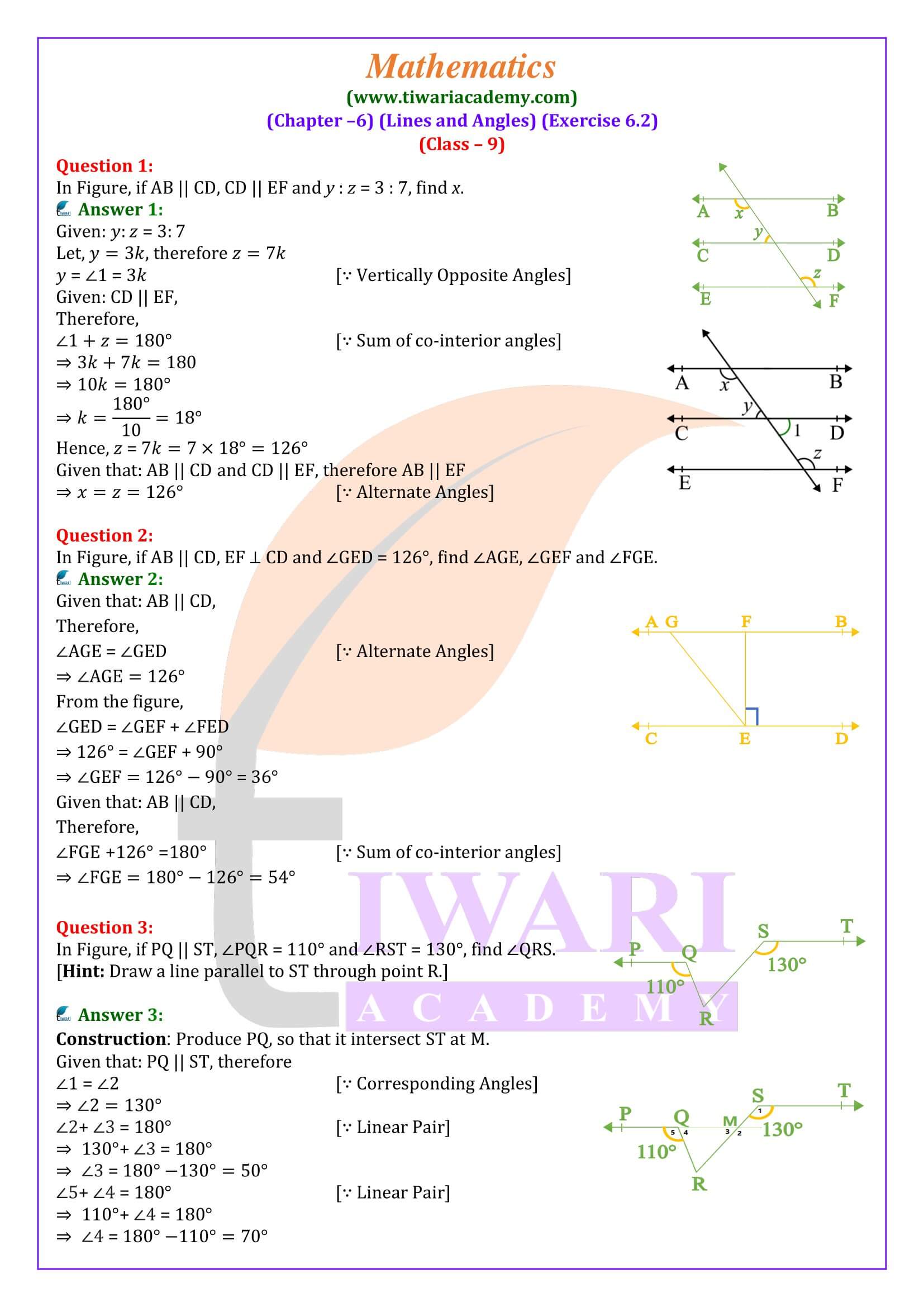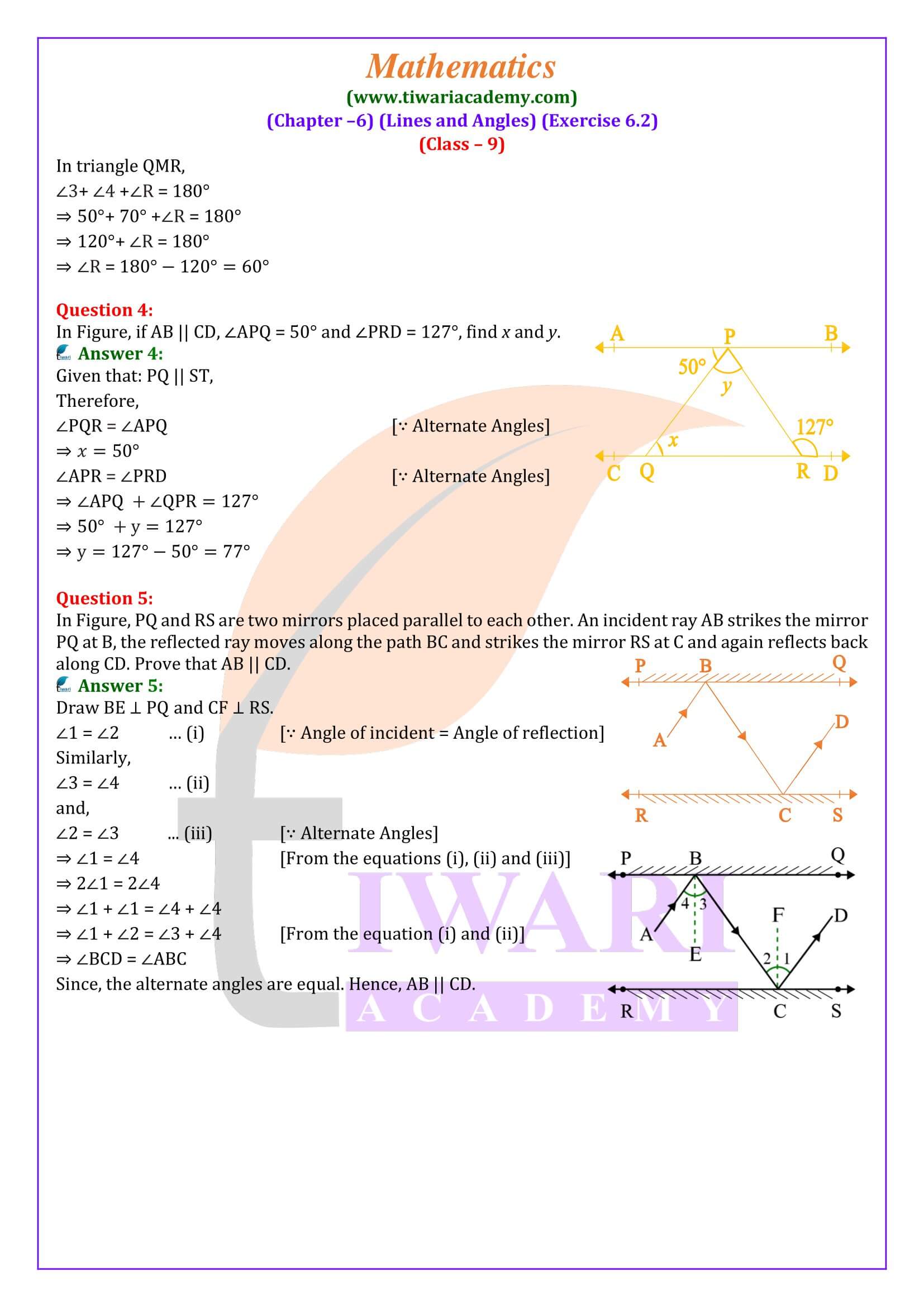NCERT Solutions for Class 9 Maths Chapter 6 Exercise 6.2 Lines and Angles in Hindi English Medium updated for session 2024-25. All the questions given in ex. 6.2 of class 9 math are prepared as per new NCERT textbooks issued for CBSE and other State boards.
Class 9 Maths Chapter 6 Exercise 6.2 Lines and Angles Solutions
Videos related to exercise 6.2 in Hindi and English are also given for better understanding. All the NCERT (https://ncert.nic.in/) Textbook questions are solved step by step in easy language. Videos based on CBSE Class 9 Exercise 6.2 are more helpful if you are facing problem to understand in text format.

| Class: 9 | Mathematics |
| Chapter: 6 | Lines and Angles |
| Exercise: 6.2 | NCERT Solution |
| Mode: | Text and Videos |
| Session: | CBSE 2024-25 |
| Medium: | Hindi and English Medium |
More about Ray and Lines
Remember that a part (or part) of a line with two endpoints is called a line segment and a part of a line with one end is called a Ray. Note that AB marks the line segment AB and its length mark AB. AB represents Ray AB, and AB represents a line. However, we will not use these symbols, and we will mark the line segment AB, the beam AB, the length AB and the line AB having the same AB. The doubt will be very clear from the context. Sometimes lowercase letters l, m, n, etc., will be used to indicate the lines.
Collinear and Non-Collinear points
If three or more points are on the same line, they are called collinear points; Otherwise, they are called non-collier points. Remember that an angle is formed when two rays originate from the same end. The rays that make an angle are called the sides of the angle. The endpoint of the joining of the two rays is called the vertex of the angle. You have studied different types of angles in previous classes such as acute angle, right angle, obstetric angle, right angle and reflex angle.
Types of Angles
An acute angle measures between 0° and 90°, while a right angle is equal to 90°. An angle greater than 90° but less than 180° is called an angle. Also, remember that the right angle is equal to 180°. An angle that is greater than 180 ° but less than 360° is called a reflex angle. Also, two angles whose sum is 90° are called complementary angles and two angles whose sum is 180° are called complementary angles. You have also studied the adjacent angles in previous classes. Two angles are adjacent if they have a common vertex, a joint arm and their abnormal sides on different sides of the joint arm. In class IX Maths NCERT book, you will study these angles in detail.
What are the main concepts of exercise 6.2 in class CBSE standard 9 Maths?
The exercise 6.2 of CBSE Class 9 Maths includes the concepts of parallel lines, transversal, corresponding angles, alternate angles, etc.
Which example of 9th math exercise 6.2 are considered as difficult one?
Example 5 given just before the exercise 6.2 takes time to solve and understand. This question is given based on corresponding angles, but in exams, the same question may be asked using the concepts of alternate angles.
Which question is most important for exams in class 9 Maths exercise 6.2?
There is a total of 6 questions in ex. 6.2 of CBSE class 9 Maths. Question number 4 asked mostly in exams. Most of the time, it is asked as it is, but sometime the digits may change.
Is exercise 6.2 of class 9 Maths easy?
Questions of exercise 6.2 of CBSE Class 9 Maths, always considered as an easy one. It takes less time to prepare and understand the concepts behind the questions.
Which problems of exercise 6.2 of grade 9th Maths are expected for exams?
Exercise 6.2 has three examples (examples 4, 5, 6) and six questions. Examples 4, 5, 6, and questions 3, 4, 5, 6 of exercise 6.2 of grade 9th Maths are expected for exams because these are the most important problems of exercise 6.2 and have already come in the exam several times. These examples and questions can come in two or more than two marks.
Which questions of exercise 6.2 of grade 9th Maths, students solve quickly and without any difficulty?
Students solve examples 4, 6 and questions 1, 2, 3, 5 of exercise 6.2 of grade 9th Maths quickly and without any difficulty because these questions are easy and straightforward. Also, the solutions to these questions are not very lengthy.
What are the corresponding angles axiom and its converse in exercise 6.2 of class 9th Maths?
Corresponding angles axiom: If a transversal intersects two parallel lines, then each pair of corresponding angles is equal.
The converse of corresponding angles axiom: If a transversal intersects two lines such that a pair of corresponding angles is equal, then the two lines are parallel to each other.
How much time, students need to do exercise 6.2 of class 9th Maths comfortably?
Students need a maximum of 2-3 days to do exercise 6.2 of class 9th Maths comfortably if they give at least 1-2 hours per day to this exercise. This time also depends on student’s working speed, efficiency, capability and many other factors.
In which questions of exercise 6.2 of class 9th Maths, students face difficulty while solving?
While solving example 5 and questions 4, 6 of exercise 6.2 of class 9th Maths, students face difficulty. These questions are a little tough to solve and understand as compared to other questions of this exercise.




